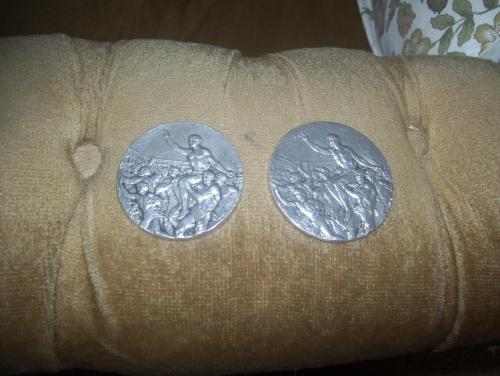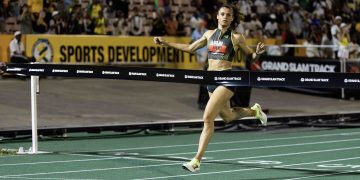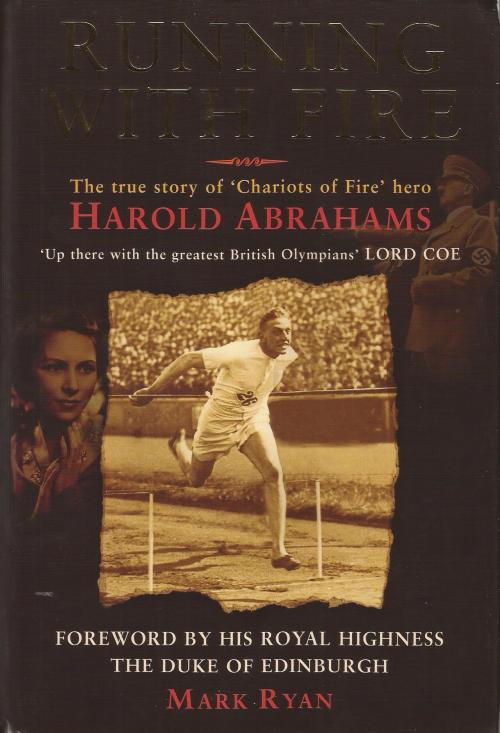 Running with Fire, book by Mark Ryan
Running with Fire, book by Mark Ryan
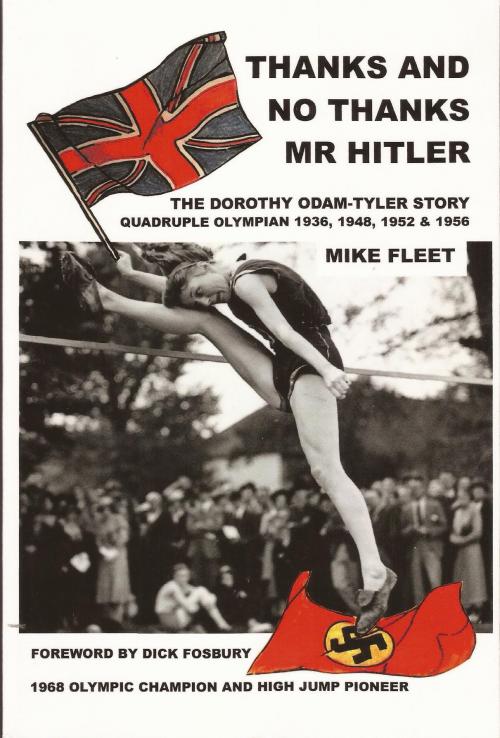 Thanks and No thanks Mr Hitler, book by Mike Fleet
Thanks and No thanks Mr Hitler, book by Mike Fleet
RelatedPosts
This is the beginning of a new series by Stuart Weir, which will appear weekly on Thursdays, with 35 upcoming book reviews. Thanks to Stuart Weir on this suggestion.
Books 1
Our sport has produced lots of books over the years and each week I will recommend some of the better ones which adorn my bookshelf. Each week will feature on a different period or genre.
This week we are looking at two relatively recently published books but which feature the 1920s and 1930s.
Thanks and No thanks Mr Hitler, Mike Fleet, Fleet Emp3books, 2015. ISBN 978-1-910734-04-9
Running with Fire, [the true story of Harold Abrahams], Mark Ryan, London, JR Books, 2011
Running with Fire
 Harold Abrahams, 1924 Olympic Games
Harold Abrahams, 1924 Olympic Games
Harold Abrahams was a British athlete who won gold in the 1924 Olympics in 10.6 beating four Americans in the final. The 1981 movie, Chariots of Fire, portrays Eric Liddell (400m gold medalist in 1924) as a thoroughly likeable man, at peace with himself and Abrahams as a troubled soul. The book confirms this portrayal of Abrahams showing him as a very complex character for whom life was always a struggle. He is described as “one of the most extroverted, conceiteded men in the university” whose appointment as President of the Cambridge University Athletic Club was due to “talent rather than popularity”.
He is portrayed as a man years ahead of his time in his training and in his employment, controversially, of a professional coach. Traditionalists apparently claimed he had broken unspoken rules by taking his winter and spring training too seriously! He was said to carry a stopwatch everywhere and was so obsessed with time that he even timed his length of time in the toilet!
The book pays tribute to Abrahams’ great contribution, after his retirement, to modernising athletics rules and practices as well as promoting opportunities for women. Yet, ironically, the athlete who was ahead of his time was seen as very reactionary as an administrator. He opposed any hint of professionalism in the sport – tooth and nail.
Contemporary coach, Tom McNab is quoted: “Abrahams was a poacher turned gamekeeper. In his athletic days he had a professional coach and often went against the mainstream of athletics thinking. But when he became part of the establishment he undermined professional coaching and became reactionary.”
The book describes Abrahams’ friendship with Roger Bannister and his role in Bannister’s world record. There is also an account of the controversy over Abrahams’ role in the world record. While he was not listed as an official time keeper, he signed the official result form. Moreover, photographs show him situated some distance from the finish line and therefore not well placed to see the exact moment when Bannister crossed the line.
After his running days were over, Abrahams worked in administration and media. There is a fascinating account of BBC agonizing about whether or not to use Abrahams, as an athletics commentator in 1936 Berlin Olympics because of his Jewish background.
It is a very readable and important book which adds to the sum of knowledge of athletics in that period and of a legend of British athletics. .
Thanks and No thanks Mr Hitler
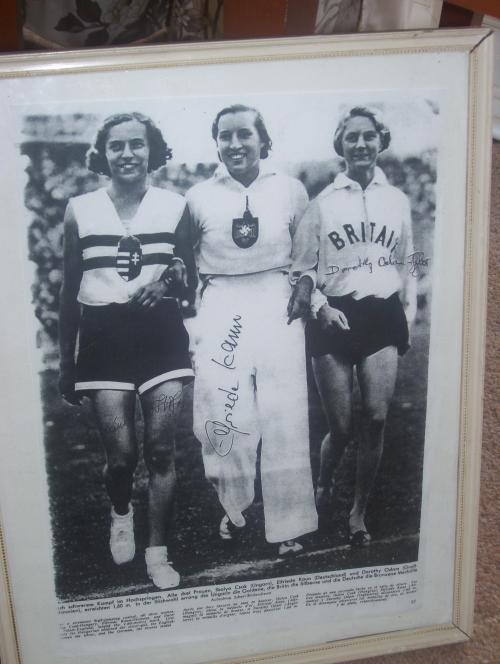 Ibolya Csak (gold), Elfriede Kaun (bronze), Dorothy Tyler-Odam (silver), 1936 Olympics
Ibolya Csak (gold), Elfriede Kaun (bronze), Dorothy Tyler-Odam (silver), 1936 Olympics
The book tells the remarkable story of Dorothy Tyler-Odam, who competed in the 1936 Olympics as a 16 year old, winning a high jump silver medal, and at three subsequent Olympics. The war robbed her of two more potential Olympic medals in 1940 and 1944. The book gives astonishing insights into how the Olympics have changed over the years. In 1936, Team GB’s budget was so tight that Dorothy had to make her own vest and shorts! The support staff at those games included chaperones for the female athletes but neither physiotherapists nor coaches!” The women were separated from the men with British women sleeping in a women’s Physical Education college”. She also recalled being asked out by a Danish athlete and not being allowed to go!
Dorothy was incredibly unlucky to be the silver medalist in both 1936 and 1948 as in both cases she cleared the same height as the winner. In 1936, the tying athletes had to take part in a jump off but under current count back rules, Dorothy would have won. The rule was changed two days after the Olympic high jump. Ironically in 1948, Dorothy felt that she would have won a jump off as the athlete she tied with (Alice Coachman) – who won on count back, would have been unable to take part in a jump off as she was struggling with an injury.
The foreword to the book is by Dick Fosbury, a very generous gesture, as Dorothy – privately and to his face – said that the Fosbury fop was cheating and “simply NOT high-jumping”. She believed “going over head first was diving” not jumping. (When Dorothy started her career there was in place a no-diving rule.)
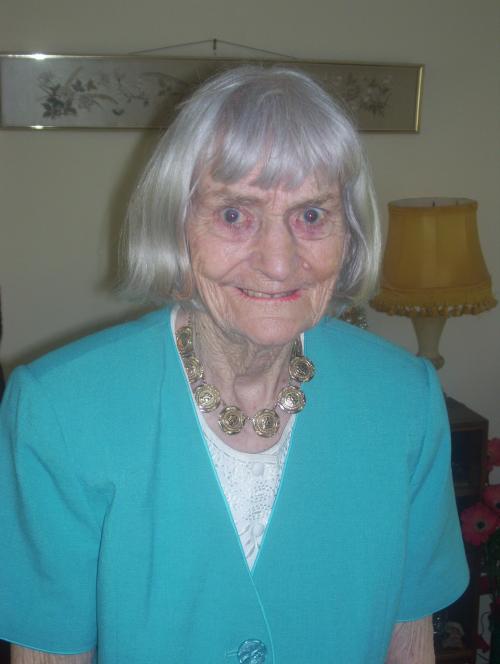 Dorothy Tyler-Odam, in her 90s!
Dorothy Tyler-Odam, in her 90s!
I was privileged to meet her in 2011. Even then in her 90s, she was a remarkable but feisty lady. When she received an OBE, presented by Prince Charles, the prince remarked that it had taken her a long time to come to receive it; she replied: “Well you have waited a long time to ask me!” One feels the prince was joking and Dorothy was not!
A must read for any student of athletics history and a good story for anyone.
Photo caption Medallists Ibolya Csák, Elfriede Kaun and Dorothy at the 1936 Olympics.
Author

Since 2015, Stuart Weir has written for RunBlogRun. He attends about 20 events a year including all most global championships and Diamond Leagues. He enjoys finding the quirky and obscure story.
View all posts

